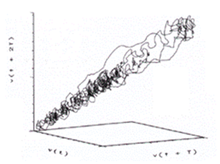Groundhog Technologies
|
| |
| Private | |
| Industry | Telecommunication |
| Founded | 2001 |
| Founder | David Chiou |
| Headquarters | Cambridge, Massachusetts, U.S. |
| Services | Geolocation, Mobility Intelligence, Network Optimization |
| Website | http://www.ghtinc.com |
Groundhog Technologies is a privately held company founded in 2001 and is headquartered in Cambridge, Massachusetts, USA. As a spin-off of MIT Media Lab,[1][2] it was a semi-finalist in MIT's $50k Entrepreneurship Competition in 2000 and was incorporated the following year.[3][4] The company received the first round of financing from major Japanese corporations and their venture capital arms in November 2002: Marubeni, Yasuda Enterprise Development and Japan Asia Investment Co.[5][6] It received second round of financing in 2004 and since then has become self-sustainable.[7]
The company’s products are built on top of its Mobility Intelligence Platform, which analyzes the locations, Quality of Experience,[8] context, and lifestyles of subscribers in mobile operator’s network.[9] The intelligence about geolocation is then applied to improve subscribers’ experience [10] and enable applications such as geomarketing and geotargeting. The Company has leveraged its platform to enable operators to address the advertising and data monetization opportunity both internally and in partnership with third party retailers, advertisers, and ad networks.[11]
Core Technologies
Groundhog Technologies launched its Mobility Intelligence platform based on Chaos Theory and multi-dimensional modeling. The application of Chaos Theory gave rise to the company’s mathematical models of subscribers' mobility and usage behavior,[12] which can be used for different applications such as by mobile operators to optimize networks according to the user demands.[13]

According to Chaos Theory, some seemly random or chaotic signals may be converted to analyze in phase space which can reveal the patterns behind it. The cases of most interest arise when the chaotic behavior shows patterns around an attractor in the phase space. Based on the attractor in the phase space, data can be utilized from different space, time, and individuals for modeling and indoor geolocation.
It is also found that the dimensional structure and characteristics of phase space can naturally neutralize the bias of positioning (based on techniques such as triangulation or trilateration) caused by reasons such as multipath. That is, although each input is biased in some way, the observation from different dimensions and angles are biased in different ways. Combining multi-dimensional input in the phase space, based on the Law of Large Numbers it can average out the bias with different samples through dimensions, time, and individuals.[14]
See also
References
- ↑ MIT Media Lab#Spin-offs
- ↑ MIT Media Lab Spin-Offs
- ↑ 15 of the Top Companies Launched— More than 80 companies, 1600 employees, $4 billion in value, MIT Sloan Management
- ↑ Groundhog's Day, Boston Business Journal, Feb 2005
- ↑ Miller, Jeff. "A Grounded Enterprise". Boston Business Journal. Retrieved July 19, 2004.
- ↑ Investors and Funding History ChubbyBrain
- ↑ Groundhog's Day, Boston Business Journal, Feb 2005
- ↑ Bloomberg Businessweek, May 2014
- ↑ Groundhog Technologies (MIT) selected by China Unicom
- ↑ Groundhog Boasts 3G/4G OSS Deal LightReading
- ↑ MIT Digital Shingle Project
- ↑ "Management system and method for wireless communication network and associated user interface". Justia Patents. Justia Patents. Retrieved 30 June 2014.
- ↑ "System with user interface for network planning and mobility management optimization in a mobile communication network and method thereof". Justia Patents. Justia Patents. Retrieved 30 June 2014.
- ↑ "System for constructing a mobility model for use in mobility management in a wireless communication system and method thereof". Justia Patents. Justia Patents. Retrieved 30 June 2014.